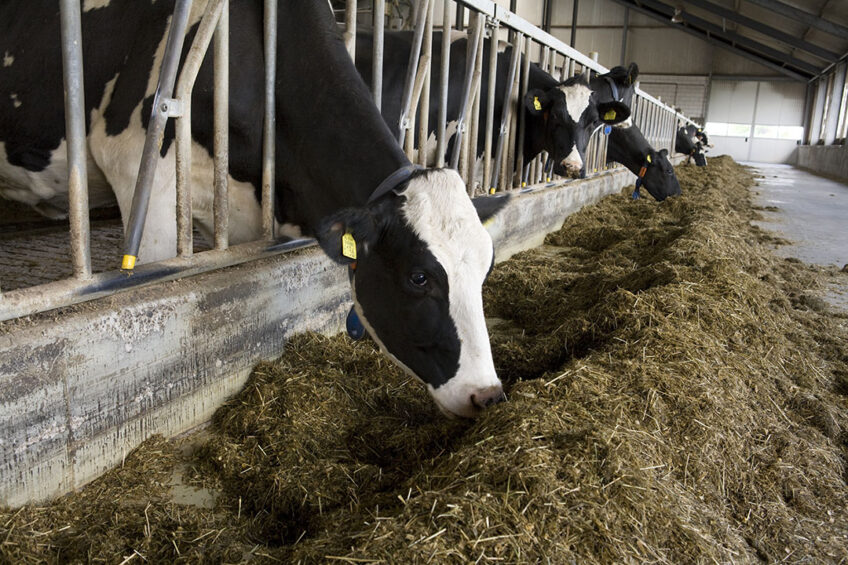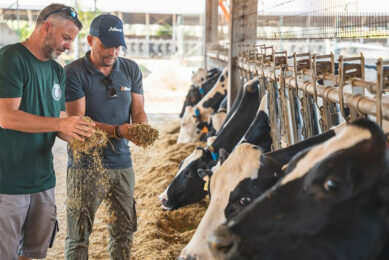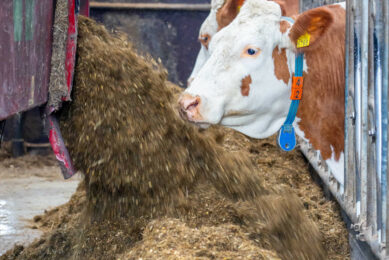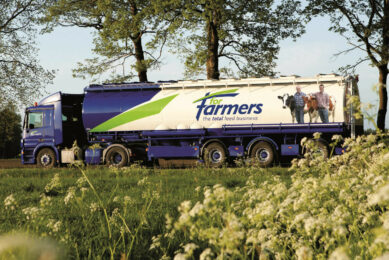A look at the Dutch gov’s new law to reduce nitrogen

A recent USDA GAIN (Global Agricultural Information Network) report looks at the Dutch parliament’s approved new law to curb nitrogen emissions in the Netherlands.
Motive behind the new law
In May 2019, the Dutch Administrative Court of the Council of State, the highest administrative body in the Netherlands, ruled that the Dutch Government’s Nitrogen Action Program (known as the PAS), a programme to limit the effects of nitrogen, was insufficient. In response, the Ministry of Agriculture, Nature and Food Quality (MANFQ) commissioned an external body to propose solutions to comply with the Court’s ruling. As a result, on 17 December 2020, the Dutch Parliament approved a new law that aims to curb nitrogen emissions in the Netherlands.
Nitrogen deposition in Netherlands
Agriculture is responsible for approximately 40% of the nitrogen emissions in the Netherlands. Looking at the contribution from agriculture, and livestock in particular, the dairy sector contributes more to the N emissions. The drive to improve sustainability of dairy production should be a great opportunity to focus on reaching better efficiencies. A big picture approach that considers both the inputs and the outputs of dairy production is needed for the future.
Nitrogen oxides and the nitrogen produced from ammonia is partly deposited, causing loss of biodiversity.
Influencing rumen microbes improves nitrogen efficiency
Feed additives can increase nitrogen efficiency and decrease NH3 emissions. Proper rumen functioning, the right protein-energy balance in the rumen and more intestinal digestible protein can also help.
“Nature does not serve an immediate economic purpose, so no one advocates in its favour. But you could easily link it to health, recreational value, and well-being. The nitrogen problem is a complex one, involving many different interests that sometimes appear to clash. Much can be won by not just focusing on nitrogen values, but by looking at the situation as a whole,” says Tia Hermans, policy-oriented senior researcher working with Wageningen University and Research.
Talking to Resource magazine, Jan Dijkstra, Associate Professor at Wageningen University and Research, notes: “One of the things I learned from the ecologists was that nature restoration is not just about nitrogen, but that a high-water table in some nature areas can be even more important for achieving nature-related objectives.”
We won’t get there just by tinkering with the feed, the cow and the manure but by considering a broader picture that encompass a business model for farmers.

The previous law
In September 2020, the MANFQ announced that it intended to temporarily limit the use of proteins in feed as of 1 September 2020 (until the end of 2020) to attain a reduction of 0.2 kilotons in nitrogen emissions. The law received strong opposition from the farm sector. In the end, the MANFQ elected to scrap the feed measure. Scientists also think that targeting the reduction of protein in feed alone will not solve it: Talking to the Resource magazine of Wageningen University and Research, Theun Vellinga, a senior researcher at Wageningen Livestock Research, states, “We won’t get there just by tinkering with the feed, the cow, and the manure, but by considering a broader picture that encompass a business model for farmers. But there is no single right solution; farmers can combine perspectives.”
The new nitrogen law
On 17 December 2020, the Dutch Minister of Agriculture, Nature and Food Quality, Carola Schouten, obtained sufficient support in the Dutch Parliament for a new law to limit nitrogen emissions in the Netherlands; the law sets limits for nitrogen levels in Natura-2000 areas.
The law has 3 main targets:
- 40 % of the nitrogen sensitive Natura-2000 areas must be below the critical deposition value (< 255 mole per hectare) in 2025,
- 50 % of the nitrogen sensitive Natura-2000 areas must be below the critical deposition value in 2030, and
- 74 % of the nitrogen sensitive Natura-2000 areas must be below the critical deposition value in 2035.
The Minister of Agriculture stated that the main difference between the new law and the previous laws is not to steer economic activities based on calculated future nitrogen emissions but on the actual nitrogen levels of the nature reserves.
Impact on GHG emissions when removing dairy cows
Often the suggested solution to combat greenhouse gas emissions has been to reduce or eliminate this industry in favour of plant production. But what is the actual impact on the environment? And what will the removal of dairy cows mean in terms of emissions?
Main provisions of the law
The budget of €2 billion for the agricultural sector will be made available for financing buy-out programs, innovation, and technical measures to reduce nitrogen emissions. The main provisions of the law are as follows:
- Besides safeguarding Natura-2000 areas, the nitrogen law also accounts for local economic, social, and cultural requirements. This provision mainly intends to consider the financial position of the farmer and the related feasibility of the measures. These local requirements are part of the EU’s directives but were not yet included in Dutch law.
- The law permits the Dutch government to discuss measures to reduce the nitrogen emissions with the European Commission and other EU Member State Governments. This provision mainly pertains to nitrogen emissions originating from neighbouring countries.
- Within 3 years, the law plans to legalise expansion or renovation permits of farmers who qualified for the permits before the verdict of the Council of State (leading to the law).
- The prohibition against voluntary bought-out farmers from starting another farm was cancelled. Meaning farmers who were voluntarily bought out can now start a farm at another location, but with substantial reduction of nitrogen emissions.
- The law includes a commitment from the MANFQ to cooperate with the agricultural and food sector, banks, NGOs, Provinces, and municipalities to agree on implementation of the law, offering economically viable and ecologically sustainable future for the agricultural sector.
Implications for the Dutch agricultural sector
The effect of the new nitrogen law on the intensive Dutch livestock sector is difficult to determine as the measures for the agricultural sector have not been agreed upon yet. The implementation of the law will depend on the efforts and objectives of the local interested parties. The only programs available to date that could have a significant impact on the sector are the previously established voluntary buy-out programs.
There is uncertainty, at present, regarding how many farmers will voluntarily pursue buyouts, and how this will impact the market and Dutch economy. It is not only the opinion of farmers, but of all stakeholders involved. On the other hand, the country’s own contribution to nitrogen deposition on Natura 2000 areas is only 60%; the other 40% comes from abroad. That means a great improvement must come from Dutch emissions reduction, and to achieve a 50% reduction by 2030, we are talking of emissions reduction of 5% per year.
Based on GAIN report, 2021, USDA. view report here.
Join 13,000+ subscribers
Subscribe to our newsletter to stay updated about all the need-to-know content in the dairy sector, two times a week.










